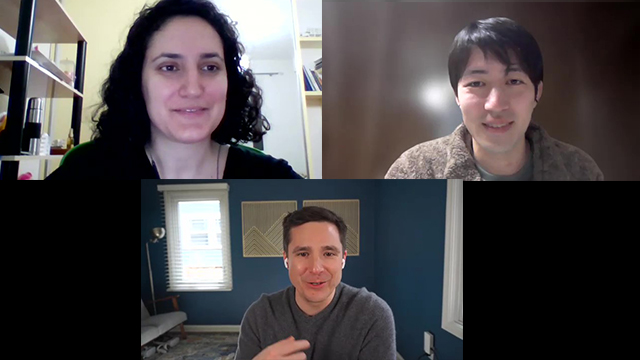Context
As stated by BIM manufacturers, adopting BIM from the beginning of a project can produce informed results that are less prone to errors and costly design iterations at later and more advanced stages. Rigorous monitoring and analysis of the decision steps through argumentation processes could provide valuable clarity to the decision making process, prevent construction related legal disputes and eventually support multidisciplinary collaborative team work.
However the current framework have been quoted by users as ‘not flexible enough’ and not appropriate for design explorations. In our podcasts we seek to better understand whether applications of virtual reality are able to bridge this gap.
Research Statement
In the words of Greg Lynn, architecture is a virtual multi framed process that produces a static image through motion. However, architects have ‘superficially’ adopted the idea of statics, designing permanent models. Virtual reality offers the possibility of experiencing buildings just like in the physical realm. Its application in design could diminish limitations created by software interfaces, becoming a natural extension of human intellect and complementing current BIM technology.
Invited guests
We have conducted interviews with 2 guests: Richard Allen Foster (architect) and Gabe Paez (computer scientist, founder of The Wild), understanding perspectives from 2 different professional fields: from practitioners on one side and companies that develop services on the other.

Interview with Richard Allen Foster
The discussion revolved around these main questions:
What is the current state of adoption of VR+AR technologies in the AEC sector? In which project stages are current software manufacturers mostly focused on?
How can this VR interface become part of the early design process in BIM, and what technical and social challenges is the dissemination of these technologies currently facing?
Have users already seen changes in their design processes and in collaborating with each other, are advantages perceivable?

Interview with Gabe Paez
As noted by both experts virtual reality is still in its start. Although certain limitation concerning processing power and software might dis-encourage users, still even in this stage, possibilities of its further development can be seen. It will be exciting to see how virtual reality will affect not only our design tools, but interfaces of softwares of other fields aswell, changing the way we work together.
Gabe Paez is the Founder and CEO of Wild Technology, Inc, the global leader of immersive collaboration software for the Architecture, Engineering, and Construction Industry. Wild Technology owns and operates The Wild and IrisVR which enable building professionals to work together in Augmented and Virtual Reality from anywhere in the world.
Richard-Allen Foster, AIA is an architect with 22+ years of experience leading the design on a diverse portfolio of project types and sizes to create engaging built environments. In 2021, He launched FOSTERiNG CREATiVE – a forward-thinking, people-centered research and design studio operating in the intersections of architecture and placemaking, storytelling, evolving cultural and social values, and emerging technologies.
BIM as a design tool through VR is a project of IAAC, Institute for Advanced Architecture of Catalonia developed in the Master in Advanced Computation for Architecture & Design, Artificial Intelligence in Architecture 2021/22 by Students: Erida Bendo and Takeaki Sakakibara and Faculty: Maite Bravo.